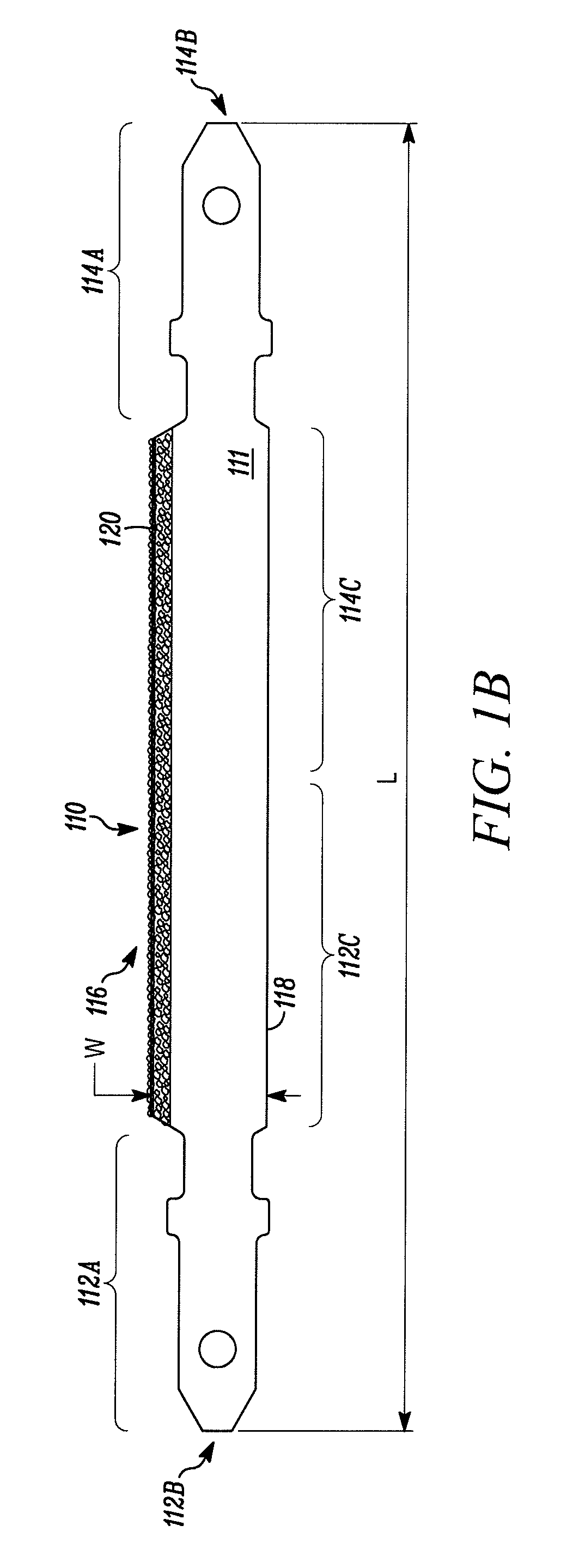Reciprocating Saw Blade With Tangs On Each End And Related Method
a saw blade and tang technology, applied in the field of saw blades, can solve the problems of significant wear life remaining, portion of the blade may not be worn out, and the blade typically incurs the most wear and/or wear, and achieves the effect of improving the wear li
- Summary
- Abstract
- Description
- Claims
- Application Information
AI Technical Summary
Benefits of technology
Problems solved by technology
Method used
Image
Examples
Embodiment Construction
[0036]Referring to the drawings and, in particular, FIG. 1, a reciprocating saw blade with a tang at each end in accordance with an illustrative embodiment of the of the present invention is shown and generally represented by the reference numeral 10. As indicated above, a reciprocating saw is a hand-held saw that includes a chuck or like mechanism for releasably engaging a saw blade and driving the saw blade in a reciprocating motion, such as a jig saw or a recip saw. The reciprocating saw causes the saw blade 10 to move in a reciprocating motion in an a series of push and pull strokes, i.e., forward strokes and return strokes. During each stroke, the saw blade 10 moves between a rearmost position and a forwardmost position to, in turn, apply a cutting action to a workpiece. When the reciprocating saw blade 10 is engaged by a reciprocating saw chuck at one end of the blade, the opposite end of the blade defines a free end that is allowed to move into engagement and through a workpi...
PUM
| Property | Measurement | Unit |
|---|---|---|
| Time | aaaaa | aaaaa |
| Width | aaaaa | aaaaa |
Abstract
Description
Claims
Application Information
 Login to View More
Login to View More - R&D
- Intellectual Property
- Life Sciences
- Materials
- Tech Scout
- Unparalleled Data Quality
- Higher Quality Content
- 60% Fewer Hallucinations
Browse by: Latest US Patents, China's latest patents, Technical Efficacy Thesaurus, Application Domain, Technology Topic, Popular Technical Reports.
© 2025 PatSnap. All rights reserved.Legal|Privacy policy|Modern Slavery Act Transparency Statement|Sitemap|About US| Contact US: help@patsnap.com



